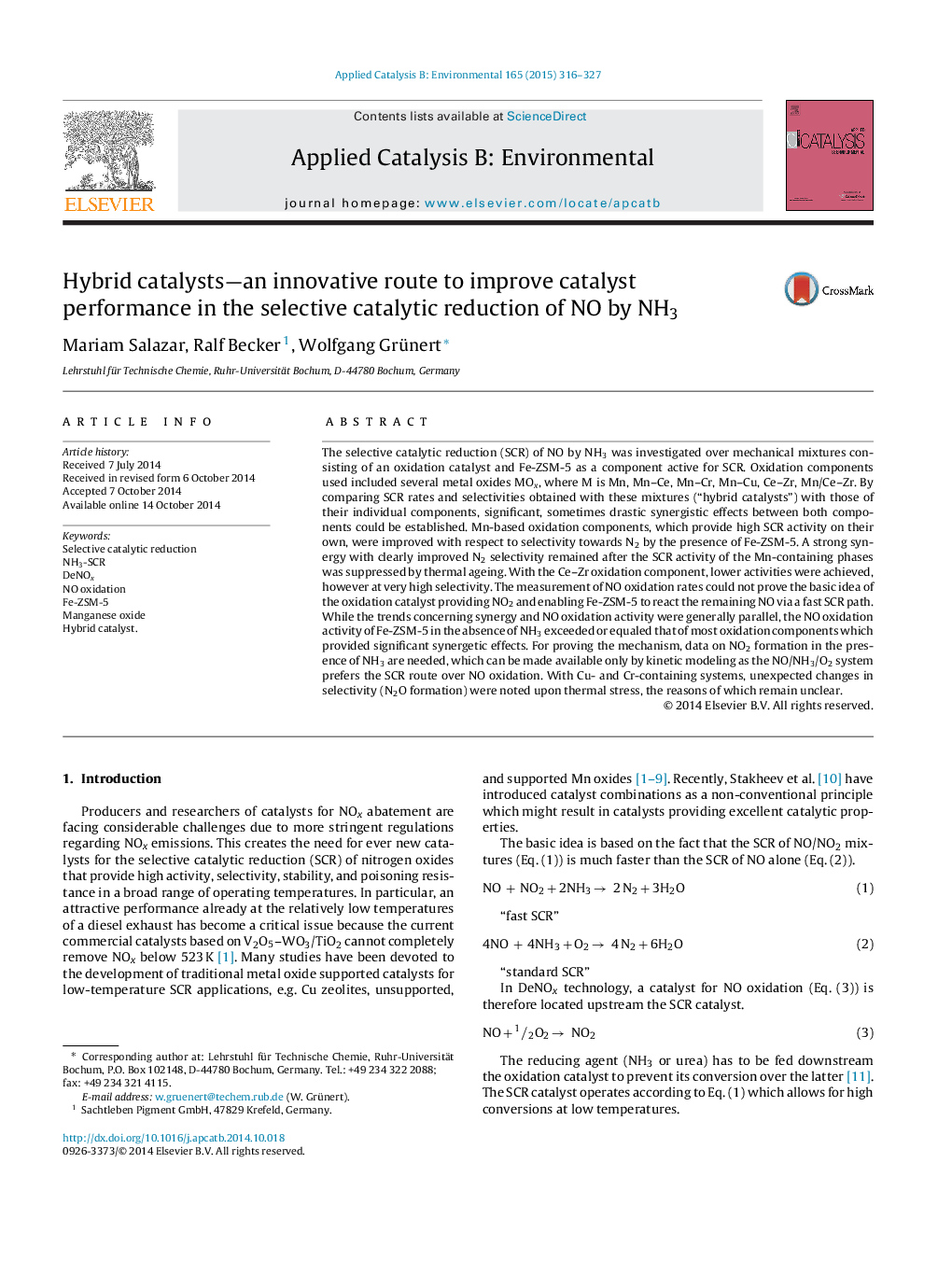| کد مقاله | کد نشریه | سال انتشار | مقاله انگلیسی | نسخه تمام متن |
|---|---|---|---|---|
| 45561 | 46416 | 2015 | 12 صفحه PDF | دانلود رایگان |

• Strong synergies seen in NH3-SCR using mixtures of oxidation catalysts and Fe-ZSM-5.
• NO conversion exceeds sum of component contributions, and less by-products are formed.
• NO oxidation of Fe-ZSM-5 is comparable to that of most oxidation components.
• Reasons why synergy may nevertheless operate via fast SCR on Fe-ZSM-5 are discussed.
The selective catalytic reduction (SCR) of NO by NH3 was investigated over mechanical mixtures consisting of an oxidation catalyst and Fe-ZSM-5 as a component active for SCR. Oxidation components used included several metal oxides MOx, where M is Mn, Mn–Ce, Mn–Cr, Mn–Cu, Ce–Zr, Mn/Ce–Zr. By comparing SCR rates and selectivities obtained with these mixtures (“hybrid catalysts”) with those of their individual components, significant, sometimes drastic synergistic effects between both components could be established. Mn-based oxidation components, which provide high SCR activity on their own, were improved with respect to selectivity towards N2 by the presence of Fe-ZSM-5. A strong synergy with clearly improved N2 selectivity remained after the SCR activity of the Mn-containing phases was suppressed by thermal ageing. With the Ce–Zr oxidation component, lower activities were achieved, however at very high selectivity. The measurement of NO oxidation rates could not prove the basic idea of the oxidation catalyst providing NO2 and enabling Fe-ZSM-5 to react the remaining NO via a fast SCR path. While the trends concerning synergy and NO oxidation activity were generally parallel, the NO oxidation activity of Fe-ZSM-5 in the absence of NH3 exceeded or equaled that of most oxidation components which provided significant synergetic effects. For proving the mechanism, data on NO2 formation in the presence of NH3 are needed, which can be made available only by kinetic modeling as the NO/NH3/O2 system prefers the SCR route over NO oxidation. With Cu- and Cr-containing systems, unexpected changes in selectivity (N2O formation) were noted upon thermal stress, the reasons of which remain unclear.
Figure optionsDownload as PowerPoint slide
Journal: Applied Catalysis B: Environmental - Volume 165, April 2015, Pages 316–327